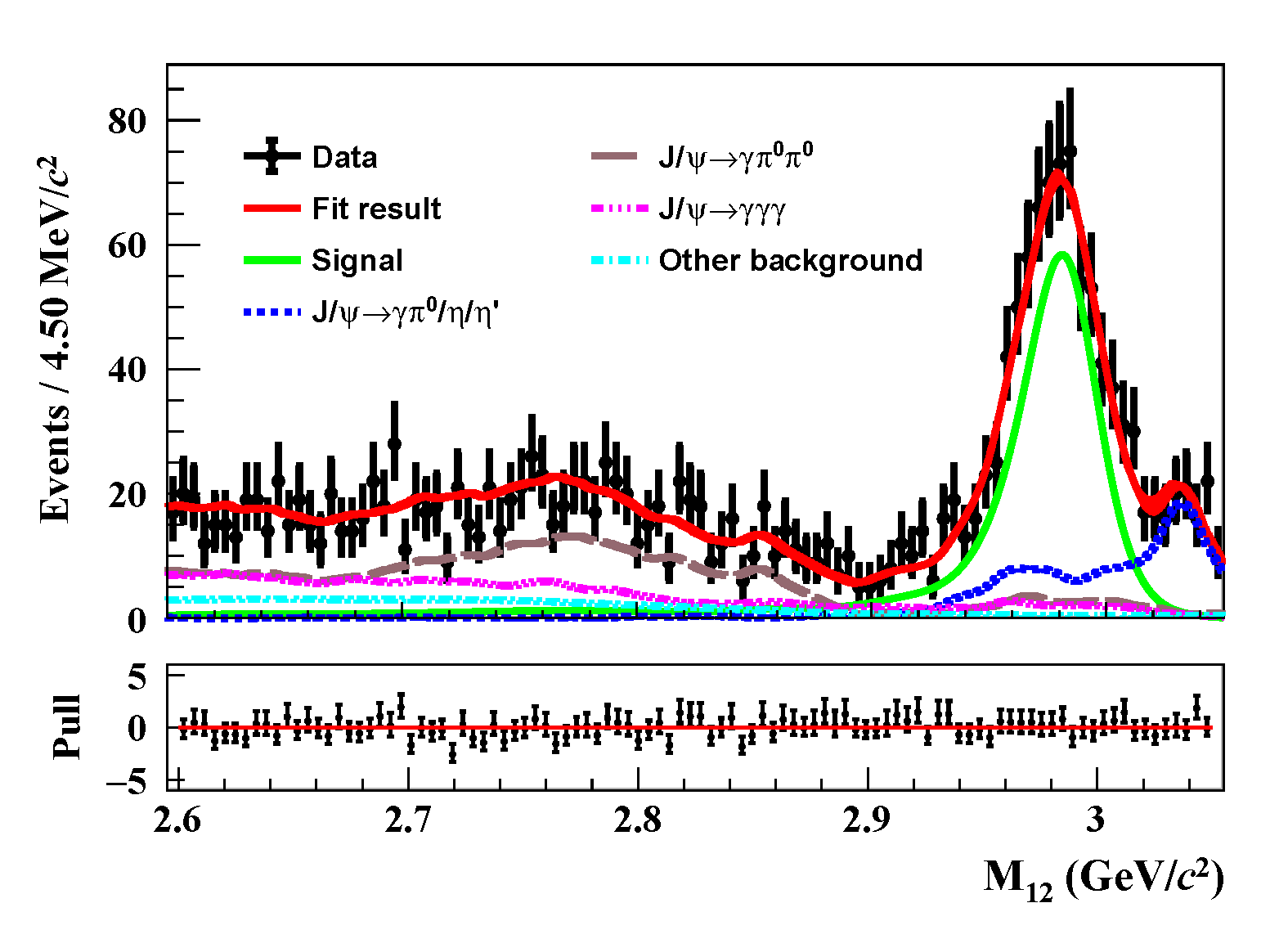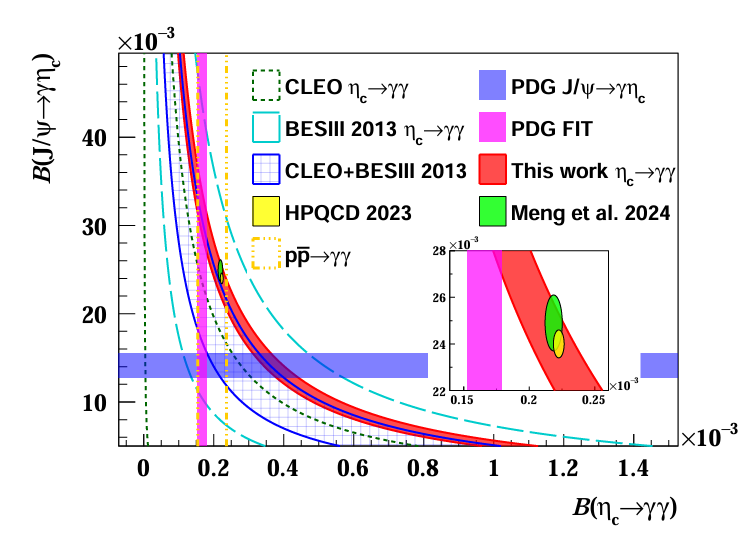

The BESIII Collaboration recently reported “Observation of the charmonium decay ηc→γγ in J/ψ→γηc”. The paper has been published online in Physical Review Letters [Phys. Rev. Lett. 134, 181901 (2025)].
The charmonium system serves as a golden probe for investigating the nature of quantum chromodynamics (QCD), which is the fundamental theory governing strong interactions. The decay rate of charmonium can provide a sensitive test of QCD calculations such as Lattice QCD (LQCD). For instance, the decay ηc→γγ remains controversial from both experimental and theoretical perspectives. Experimentally, several measured results can be utilized to calculate the partial decay width Γ(ηc→γγ), including indirect measurements from two-photon fusion and direct measurements from J/ψ→γηc and ppbar→ηc→γγ. Currently, direct measurements exhibit large uncertainty, and the world average result of Γ(ηc→γγ) is dominated by the indirect measurements. On the theoretical side, a critical problem arises: the recent precise LQCD calculations do not align with the current average experimental result. Additionally, a related concern arises in the theoretical predictions for Γ(J/ψ→γηc), which are also significantly larger than the current average experimental results.


Left plot: Fit to the invariant mass distribution of di-photons; Right plot: Results of B(ηc→γγ) versus B(J/ψ→γηc) both in experimental measurements and theoretical calculations.
Using 2.7 billion ψ(3686) events collected at the Beijing electron-positron collider, the BESIII Collaboration carried out the measurement of ηc→γγ via ψ(3686)→π+ π- J/ψ with J/ψ→γηc. The cascade process J/ψ→γηc,ηc→γγ is observed with a statistical significance exceeding 5σ for the first time, as shown in the left plot, and the product branching fraction is determined to be (5.23±0.26±0.30)×10-6. This result does not agree with the product of the word average results of B(J/ψ→γηc) and B(ηc→γγ). By combining the word average B(J/ψ→γηc), the decay width of ηc→γγ from this measurement significantly deviates from the world average value, which is dominantly based on the time-inverse indirect measurements from two-photon fusions, with confidence level of more than 3σ. But interestingly, the measured result of B(J/ψ→γηc)×B(ηc→γγ) is consistent with two latest LQCD calculations, as shown in the right plot. This work provides an essential input to understand the discrepancy between experimental measurements and theoretical calculations, and hence, improve our understanding of the QCD dynamics in the charmonium system.
Reference: BESIII Collaboration, Phys. Rev. Lett. 134, 181901 (2025)
Journal publication: https://journals.aps.org/prl/abstract/10.1103/PhysRevLett.134.181901
DOI: 10.1103/PhysRevLett.134.181901